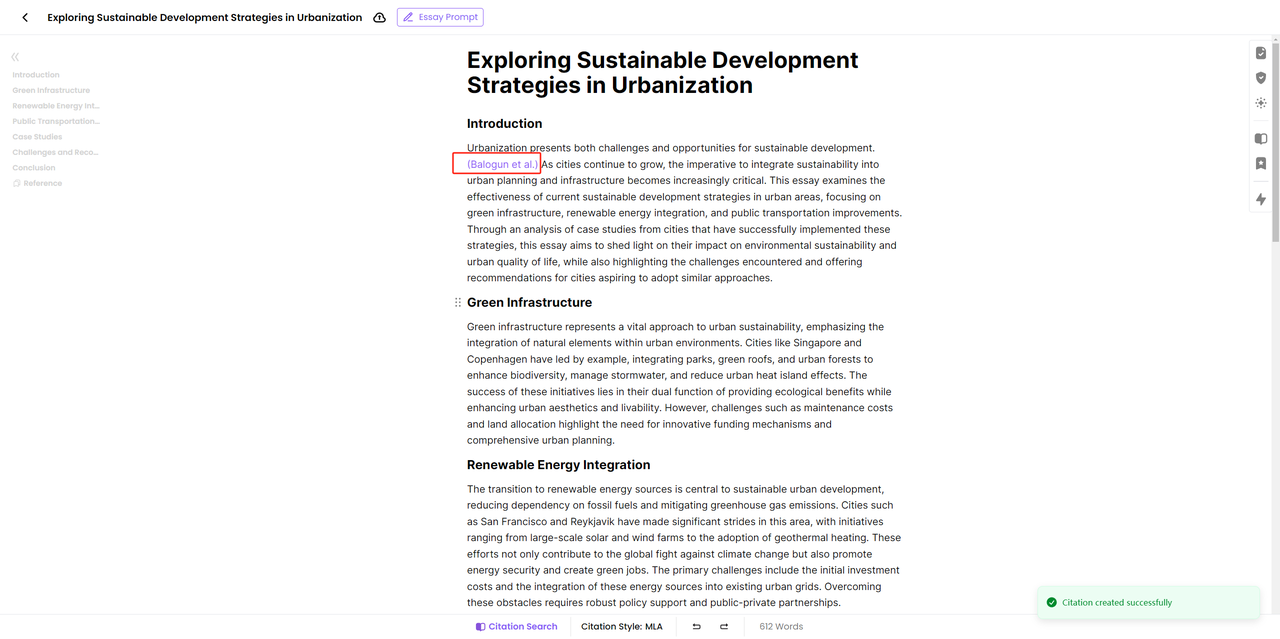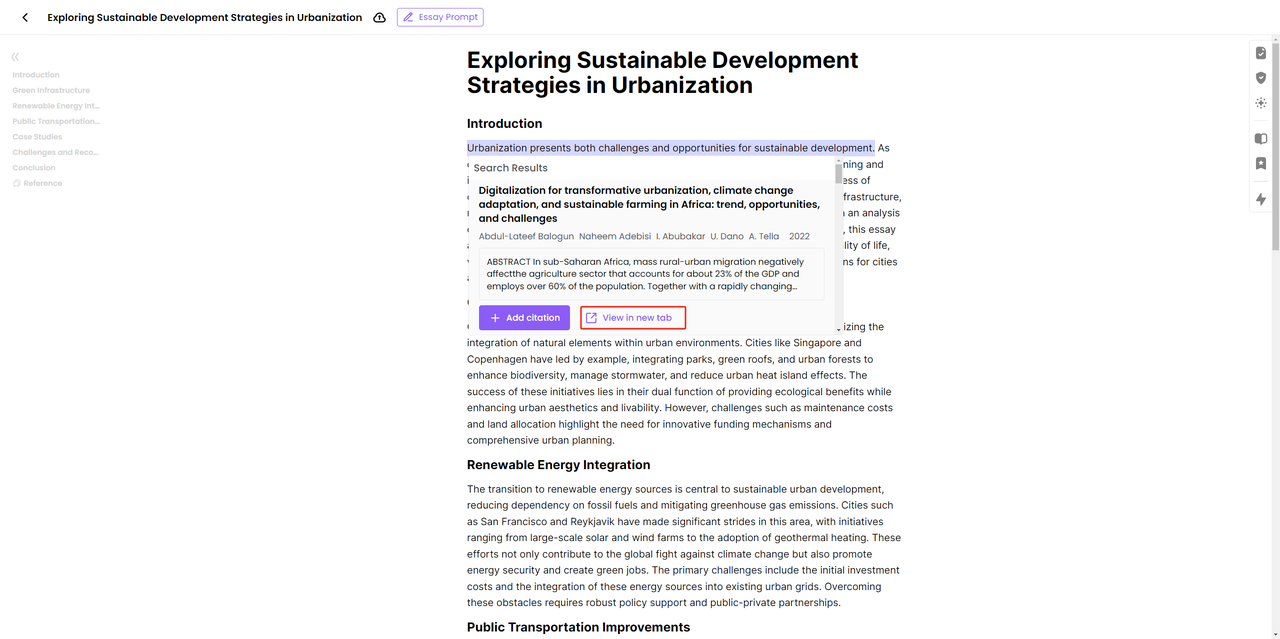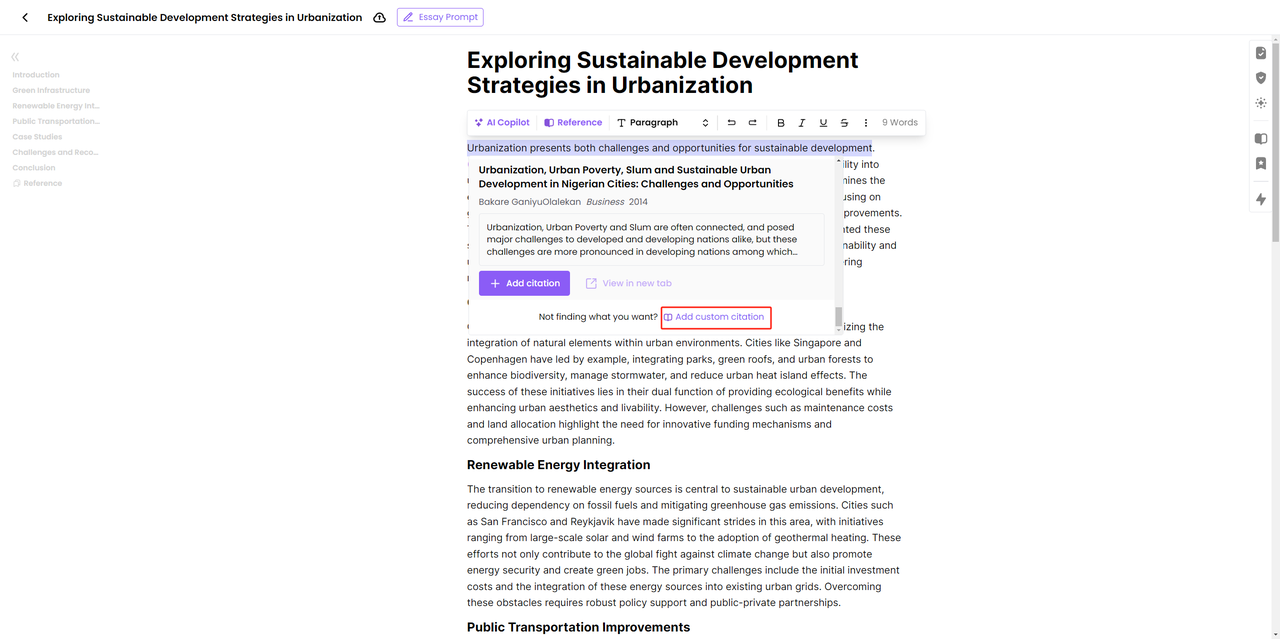How to Create In-Text Citations in MLA: A Comprehensive Guide with ProDream AI
Minutes Read
June 6
How to Create In-Text Citations in MLA
Struggling with MLA in-text citations? You're not alone. Crafting accurate citations can be a daunting task, but it's essential for maintaining the credibility and integrity of your academic work. This guide will walk you through the rules for in-text citations in MLA format, helping you understand why and how to cite sources correctly. Additionally, we'll show you how ProDream AI can streamline your citation process, making your research and writing tasks easier and more efficient.
Understanding MLA In-Text Citations
MLA (Modern Language Association) format is commonly used in the humanities, particularly in writing on language and literature. In-text citations in MLA format provide a way to give credit to sources within the text of your paper, which corresponds to the detailed entries on your Works Cited page.
Why Use In-Text Citations?
In-text citations are crucial for:
- Avoiding Plagiarism: Giving proper credit to the original authors of your sources.
- Providing Credibility: Supporting your arguments with evidence.
- Guiding Readers: Allowing readers to locate the sources you used.
General Guidelines for MLA In-Text Citations
1. Author-Page Method: In MLA format, the author's last name and the page number from which the information or quote is taken must appear in the text. For example: (Smith 45). This helps readers identify the source of the information and find it easily in your Works Cited list.
2. Placement: Usually, the citation is placed at the end of the sentence, before the period. However, it can be placed elsewhere in the sentence if it fits better with the flow of your writing.
3. Correspondence: Any source information you provide in-text must match the source information on the Works Cited page. This consistency ensures that readers can locate the original source for verification.
When to Cite: Author, Year, and Page
In MLA format, you generally need to cite the author's last name and the page number. The year is not required in MLA in-text citations. You should cite a source whenever you quote, paraphrase, or refer to information from that source.
Examples:
- Single Author: (Smith 23) - This format indicates that the information was taken from page 23 of a work by an author named Smith.
- Author Mentioned in Text: Smith argues that "..." (23). - When you mention the author's name in the sentence, you only need to include the page number in the parenthetical citation.
By citing the author and page number, you provide a clear path for readers to trace the original source of your information.
Different Source Type Citations
Books
When citing books, you include the author's last name and the page number.
- One Author: (Smith 23) - This is the basic format for citing a book by a single author.
- Two Authors: (Smith and Johnson 45) - When a book has two authors, include both last names connected by "and".
- Three or More Authors: (Smith et al. 67) - For a book with three or more authors, list the first author's last name followed by "et al."
These citations allow readers to find the exact location of the information in the books you referenced.
Articles
The format for citing articles depends on whether the article is in print or online.
- Print Article: (Jones 112) - For articles in print, cite the author's last name and the page number.
- Online Article: (Jones) - For online articles without page numbers, only the author's last name is necessary.
- No Page Number: (Jones) - If the online article has no page number, you don't need to include one in the citation.
These citations help readers locate the specific article you used in your research.
Websites
Websites often don't have page numbers, so the format is slightly different.
- With Author: (Brown) - Cite the author's last name if available.
- No Author: ("History of Soccer") - If there's no author, use a shortened title of the webpage in quotation marks.
Website citations help direct readers to the exact webpage you referenced.
Citing Without Authors
When there is no author, use a shortened title of the work. Titles of books should be italicized, and titles of articles should be in quotation marks.
Examples:
- Book with No Author: (Encyclopedia of World History 236) - Italicize book titles and include the page number.
- Article with No Author: ("Understanding Artificial Intelligence" 14) - Use quotation marks for article titles and include the page number.
This method allows you to cite sources accurately even when the author is not known.
Multiple Author Cases
When a source has multiple authors, the format varies depending on the number of authors.
Two Authors
- In Text: Smith and Johnson argue that... - Mention both authors' names in the text.
- Parenthetical: (Smith and Johnson 98) - Include both authors' names and the page number in the parenthetical citation.
Three or More Authors
- In Text: Franck et al. claim that... - Use "et al." after the first author's last name.
- Parenthetical: (Franck et al. 327) - Include the first author's last name followed by "et al." and the page number.
These formats ensure that all contributing authors receive proper credit.
Additional Important Rules
Citing Multiple Works by the Same Author
When citing more than one work by the same author, include a shortened title to distinguish between the works.
Examples:
- Two Articles by Same Author: (Smith, "Title One" 45; "Title Two" 78) - Use a comma to separate the author's name and the shortened title.
- Two Books by Same Author: (Murray, Write to Learn 6; A Writer Teaches Writing 3) - Italicize book titles and include the page number.
Citing Indirect Sources
Sometimes you need to cite a source that is quoted in another source. Use "qtd. in" to indicate the source you actually consulted.
Example:
- Ravitch argues that high schools are pressured to act as "social service centers" (qtd. in Weisman 259) - This format shows that you found the quote in Weisman's work.
Using ProDream AI for MLA In-Text Citations
ProDream AI simplifies the process of creating and editing in-text citations. Here's how you can use ProDream AI to enhance your citation process:
- Generate Citations: When writing your paper, ProDream AI allows you to highlight text where you need to insert a citation. By simply inputting the author and page number, ProDream AI generates accurate MLA-formatted in-text citations for you.
- Citation Verification:ProDream AI verifies your citations to ensure they match the source material accurately. This feature helps to correct common errors, such as misattributed dates or author details, and ensures that all citations are properly formatted according to MLA guidelines.

- Integrated Research and Citation:ProDream AI’s integrated research tool allows you to find reliable academic sources. Highlight a topic or keyword in your document, and ProDream AI will search through an extensive database of scholarly articles. Once a source is selected, it can be added to your citation library and inserted into your document with a single click.
- Custom Citation Entries: If you have specific references, the “Add Custom Citation” option allows you to manually enter the details. ProDream AI will then generate the in-text citation and corresponding Works Cited entry.



Correctly creating in-text citations in MLA format is crucial for maintaining the integrity of your academic work. By following the rules outlined in this guide, you can ensure your citations are accurate and professional. Additionally, using tools like ProDream AI can streamline the citation process, allowing you to focus more on your writing and research.
For more detailed information, you can refer to official sources like the Purdue OWL MLA Formatting and Style Guide. Also, stay tuned for more blogs on research and citation tips, coming soon to our ProDream AI blog. Happy writing!
Unlock the full potential of your academic essays with ProDream AI, your essential partner in navigating the complexities of college writing. Try it for free, or subscribe starting from just $7.99 a month. ProDream AI offers an advanced suite of AI-driven tools that enhance essay quality, from crafting compelling arguments to perfecting grammar and style. With ProDream AI, you gain access to sophisticated features like paraphrasing, academic tone enhancement, and targeted content development that make writing not only easier but also more impactful.
Whether you're tackling your first college assignment or pushing through your final year, ProDream AI provides personalized support that adapts to your unique writing needs. Subscribe today to transform your writing process with technologies that ensure your academic work is both polished and persuasive. Experience the difference with ProDream AI – where innovative technology meets academic excellence.
Start your journey to better writing today – Sign up for ProDream AI and elevate your academic performance!

